On the last hours of the Artemis I mission, 11 December 2022, the Orion spacecraft oriented itself to come in fast over Earth, arriving from the south along the west coast of South America to hit its target splashdown area off the coast of Baja California, Mexico. This is the last entry of the flight day updates.
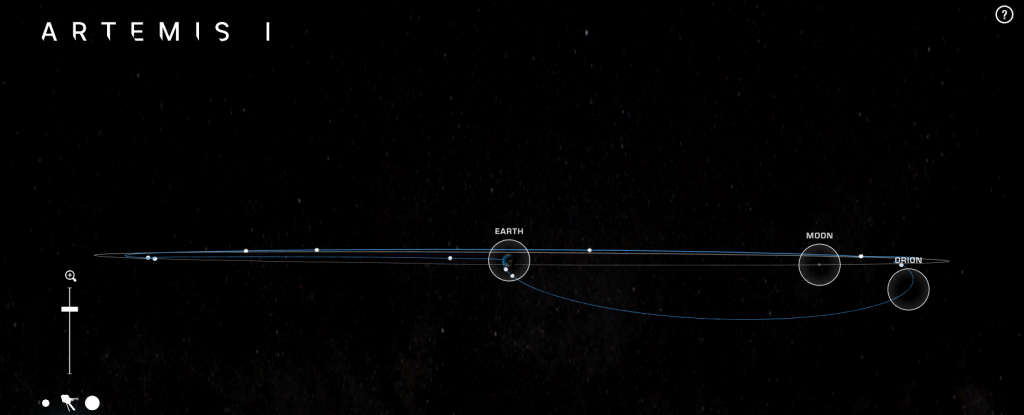
The European Service Module supplied the last return transit correction using its 24 small thrusters at 12:20 GMT (13:20 CET) on 11 December. The thruster firing lasted 8.4 seconds and moved Orion just 1.2 km/h, a little nudge and a final setup for reentry.
One of the Artemis I mission objectives was to target a landing on Earth and hit it within an 80 km radius. This might seem like a large area, but when you have travelled 432 210 km from Earth and return at speeds 32 times faster than the speed of sound, the 80-km target shows incredible precision. The picture below was taken from the European Service Module’s solar array cameras on approach to Earth at the height of typical geostationary navigation satellites. The splashdown target is smaller than an individual pixel on your computer screen.
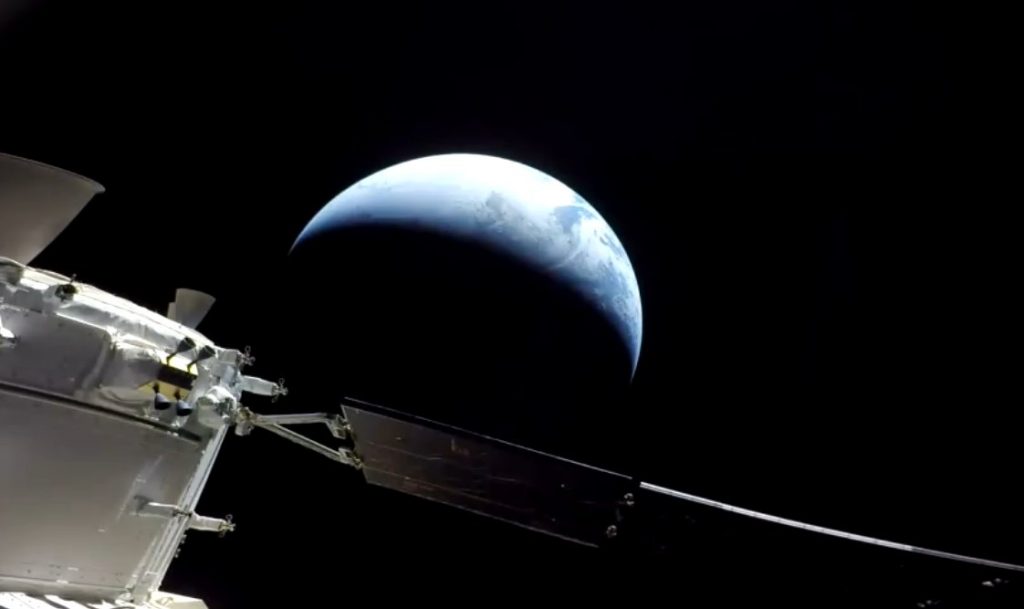
At 17:00 GMT (18:00 CET) the European Service Module, together with the Crew Module Adapter, separated from the Crew Module, firing pyrotechnic bolts that literally explode to break the seal between the spacecraft modules. Springs then push the modules away from each other. This spring-loaded system is also used with undocking spacecraft from the International Space Station. From here on, the Crew Module was on its own in the last 40 minutes of its mission.
The Artemis I mission for the European Service Module lasted 25 days, 10 hours and 10 minutes. Without a heat shield to protect it from the friction of entering our planet’s atmosphere at ridiculous speeds, the service module burned up harmlessly, as planned, over the Pacific Ocean. The Artemis I trajectory is designed to ensure any parts on break up do not pose a hazard to land, people, or shipping lanes.
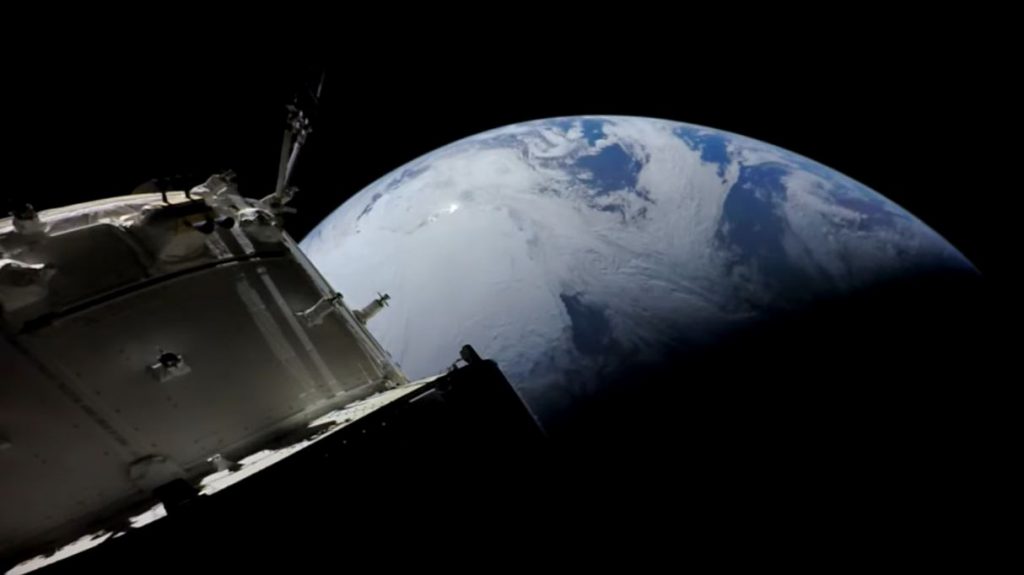
Skip it
With the crew module on its own, hurtling over Earth and running on batteries, the mission designers had a new-for-NASA profile planned: the skip entry technique. First the capsules reaction control thrusters system fired to orient itself flying at a speed of around 41 038 km/h for a good approach. These 12 small engines are used to guide the crew module, ensure that it is properly oriented with the heat shield facing downward, and keep the spacecraft stable during its descent. The control thrusters were checked 24 hours before and started a warm-up of the engines 10 minutes before the separation with the European Service Module.
If you have ever skipped flat stones on the surface of a lake, then you have an idea of what the Artemis mission managers had in mind, but then substitute the stone with the Orion crew capsule and the water of the lake with our planet’s atmosphere, and increase the speed of operations by 2000. When skipping stones on a lake, each bounce off the surface of the water extends the flying time but also slows down the stone until it sinks into the water. Orion was exploiting the same physics but on a much larger scale.
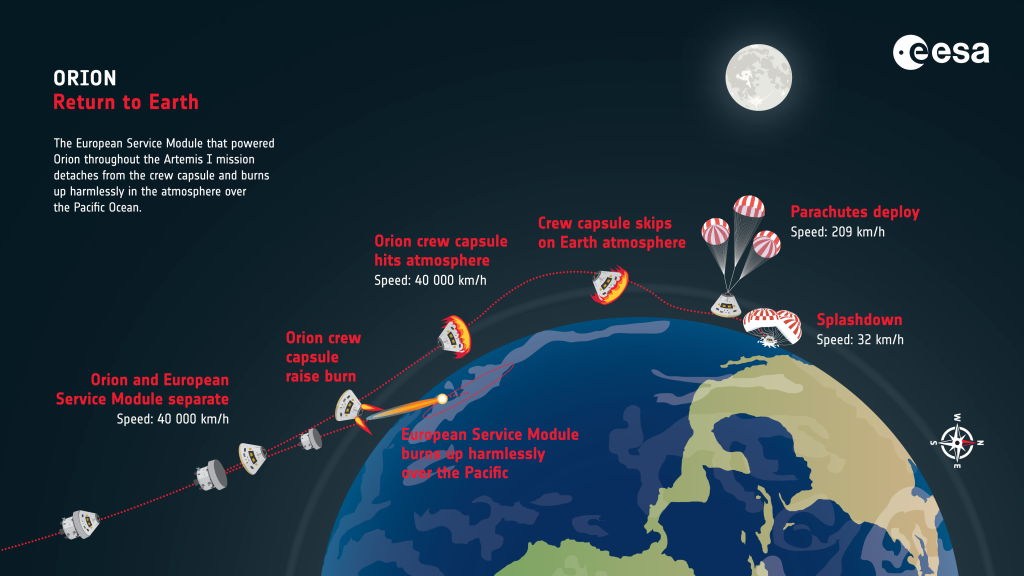
By approaching our atmosphere at the right angle, Orion dipped into Earth’s upper atmosphere and, along with the lift of the capsule, skipped back out for a brief period, and then reentered for its final descent. This technique allows for more accuracy and consistency when targeting splashdown, as well as allowing for more freedom in choosing landing areas, regardless of when and where an Artemis spacecraft returns from the Moon. The moment when the module hit our atmosphere is called the “entry interface” in mission terminology. For the crew module the entry interface occurred at 17:20 GMT (18:20:14 CET).
The 32-times-faster than the speed of sound return caused more than just ripples in a lake, and the crew capsule started heating up intensely as our atmosphere started hitting the module. Temperatures reached 2760°C – half as hot as the surface of the Sun – but the crew capsule is lined with a material called avcoat that ablates, evaporating and removing heat in the process as it disappears. While the insides stayed safe and warm, outside the intense heat turned the spacecraft into a ball of plasma that cut all radio communications, this is an inescapable but always-intense moment for any spacecraft reentry.
Parachutes for a splash…
The skip in Earth’s atmosphere slowed the spacecraft down to 523 km/h, and once Orion emerged from its ball of plasma, parachutes were used to slow Orion to a safe splashdown speed.
The parachutes are deployed as a series and in steps that started at an altitude of five miles with three small parachutes pulling the forward bay covers away. These are the covers on the other side of the heat shield, the same side that includes Orion’s port for when it docks with the lunar Gateway. The forward bay cover was ripped off as planned at 17:36:02 CET (18:36:02 GMT).
With the forward bay cover gone, two drogue parachutes deployed at 17:36:06 GMT (18:36:06), just four seconds later, to slow, and importantly, stabilise the crew module for its main parachute deployment. Drogue parachutes are a type of parachute designed to cope with high speeds. As such they have less surface area, and less stopping power than normal parachutes.
Just under 3 km altitude it’s time to get the main parachutes out. These three large orange-and-white (for visibility) parachutes are released when Orion is traveling at a mere 210 km/h. The parachutes are deployed, by using… more parachutes! These parachutes are called pilot parachutes, with three of these smaller types lifting, or piloting, the main parachutes into position. The three main parachutes were deployed just a minute and 20 seconds after the drogue chutes at 17:37:26 GMT (18:37 CET).
…and retrieval
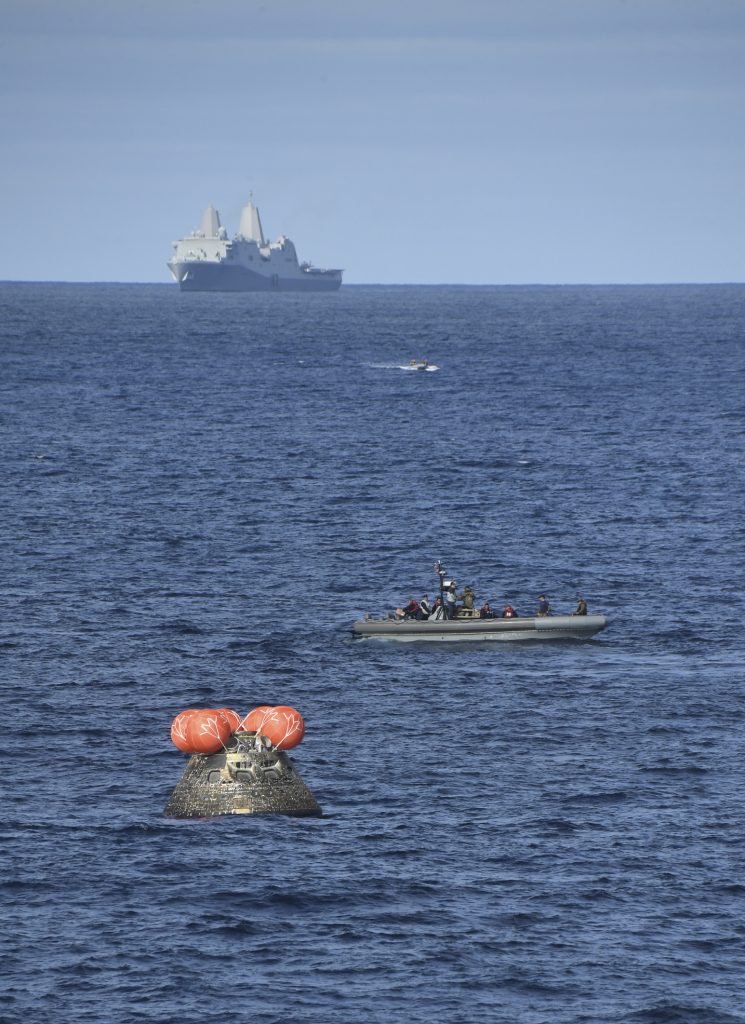
With the skip entry complete, and all 11 parachutes deployed (three to remove the bay cover, two drogues for stabilisation and initial slow down, and then three pilot parachutes to guide the three main parachutes into position) there is nothing left but to wait for splashdown. This occurred at 17:39:41 GMT (17:39:41 CET).
In case of rough weather, waves or high winds, could knock the crew capsule upside-down, but a uprighting system, known as CMUS, consists of five bright-orange helium-filled bags on top of the capsule. The system is set to always deploy and even though landing for Artemis I was in calm weather and by-the-freshly-written book, the distinctive orange spheres can be seen on all the landing photos. The capsule must be upright for the communication systems to work and it is a more comfortable wait for the future Artemis astronauts on Artemis II and beyond.
For the Artemis I retrieval, more tests were done as the crew capsule floated in the Pacific Ocean. Somewhat unglamorously, Orion was left to bob around on the ocean for two hours as flight controllers in mission control at NASA’s Johnson Space Center in Houston, USA, gathered more data about the spacecraft, including on how the capsule’s active thermal control system behaved without the European Service Module providing climate control and other thermal properties after the flaming-ball-of-fire approach through Earth’s atmosphere.
The propellant that the Orion crew capsule uses during reentry is toxic, and a chemical reaction is never perfect so there a second test was to measure any unburnt propellant on the thrusters and on the capsule. The type of propellant used (hydrazine) reacts with water to form harmless compounds, so the teams monitored how much propellant was left and how long it took to react harmlessly into non-toxic compounds. The process can be accelerated by spraying water on the capsule as they do on the SpaceX Dragon capsule.
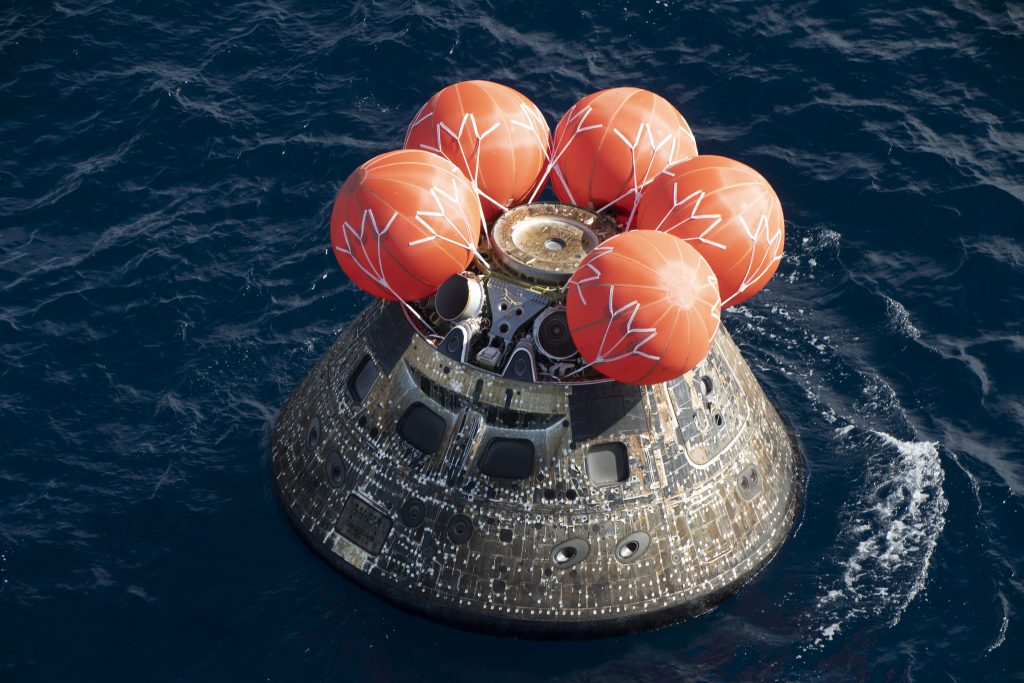
Recovery personnel also took detailed pictures of the spacecraft before attaching a cable to pull the spacecraft into the USS Portland ship nearby, with additional lines for stability. Orion was then winched into a cradle inside the ship’s well deck. Once ready the water inside the ship is drained and the crew capsule secured.
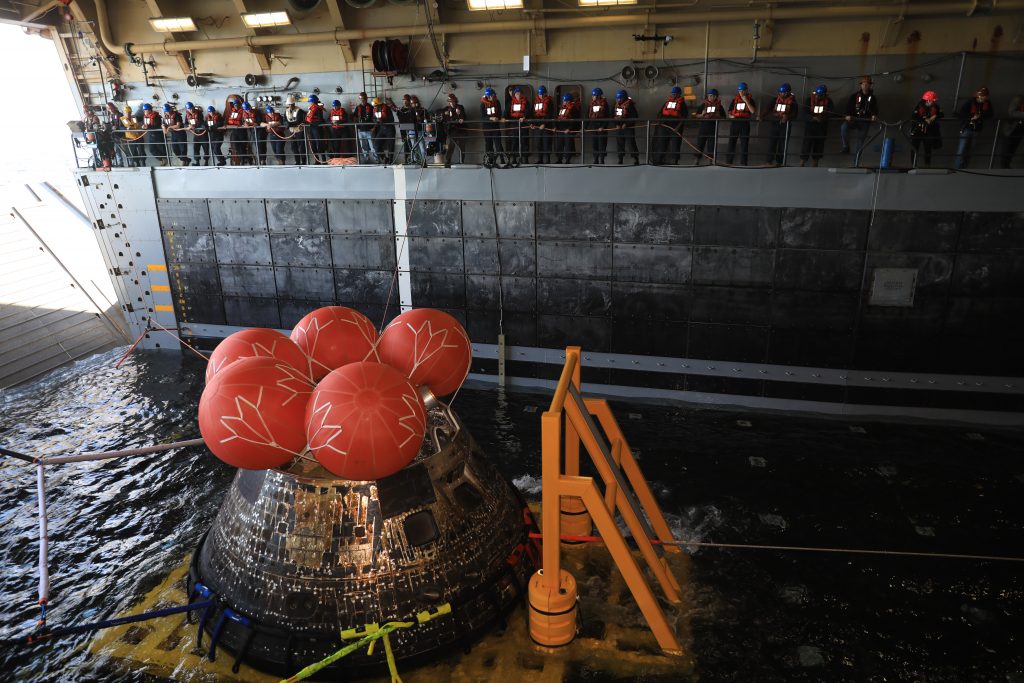
Orion returned to land after 25 days of space and water, arriving at a naval base in San Diego, USA. Engineers inspected the spacecraft’s windows before installing hard covers and deflating the five airbags on the crew module uprighting system in preparation for the final leg of Orion’s journey over land. Orion’s hatch was opened at the naval base to remove Biological Experiment-01. This experiment studies the effect of space radiation on plant seeds, fungi, yeast, and algae before sending humans to the Moon and, eventually, to Mars. The quick opening of the hatch and retrieval allowed the scientists to begin their analysis before the samples degraded.
From there the capsule was trucked over land to NASA’s Kennedy Space Center for inspection, leaving San Diego on 21 December 2022 and arriving a week later on 30 December.
Mission over!

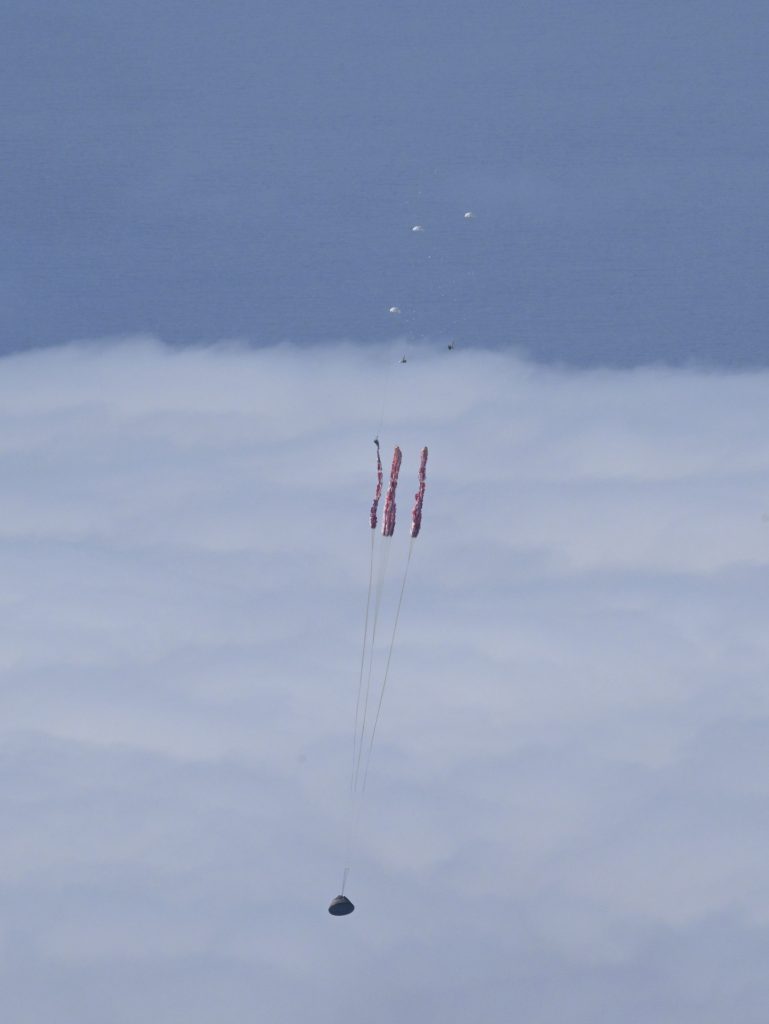
 Automated Transfer Vehicle page
Automated Transfer Vehicle page ATV blog archive
ATV blog archive
Discussion: no comments